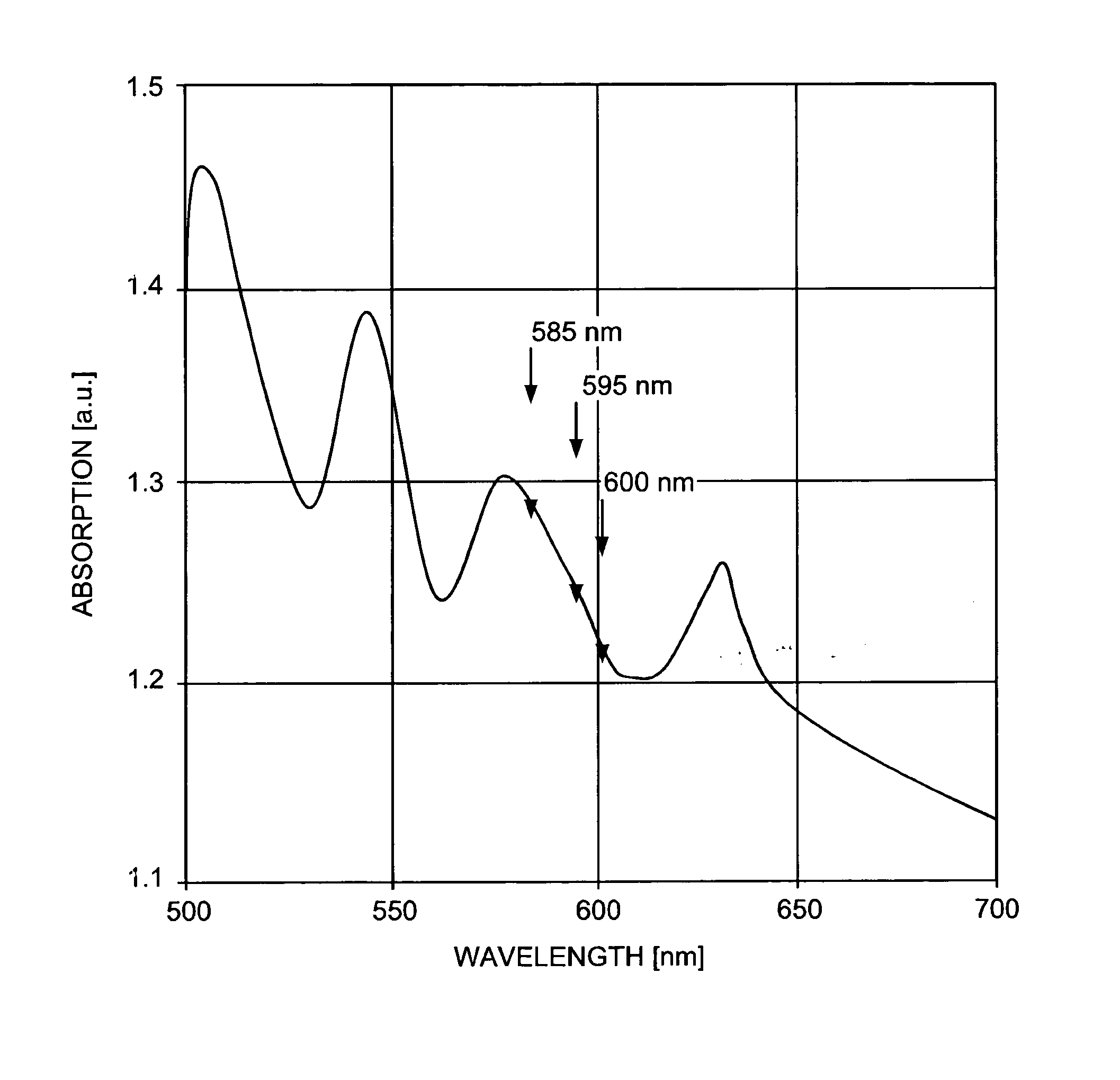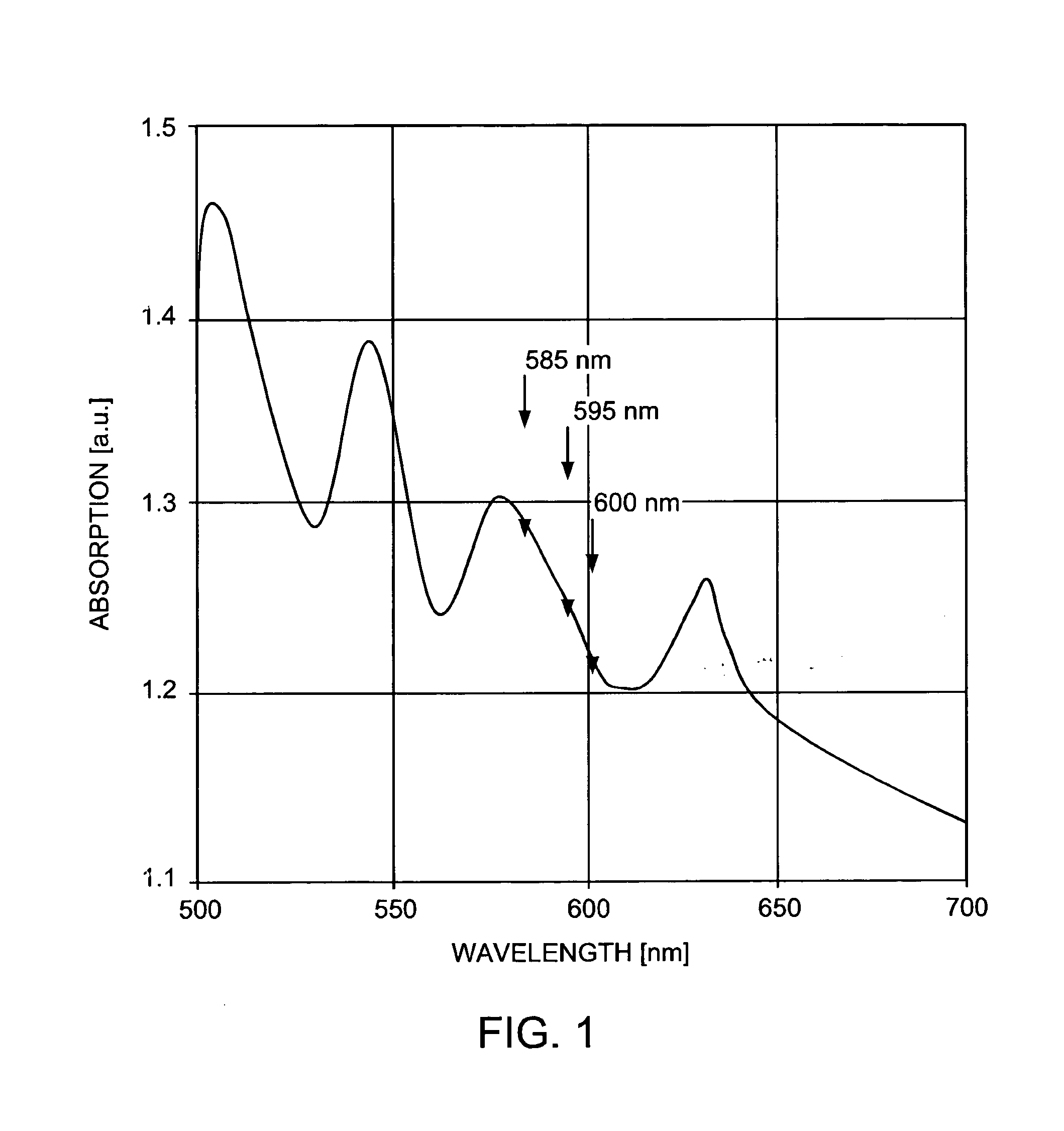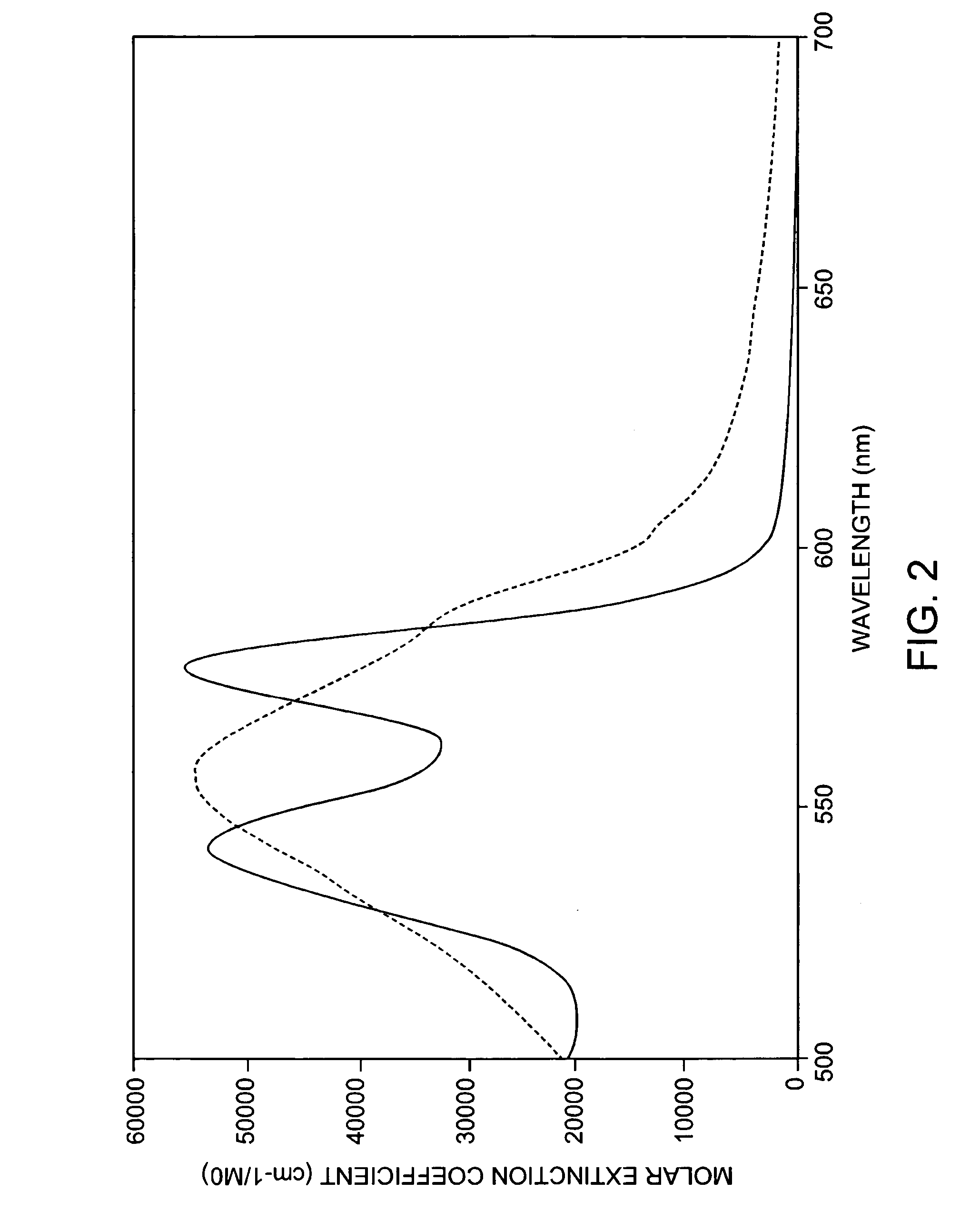High fluence rate activation of photosensitizers for dermatological applications
a technology of dermatological applications and photosensitizers, which is applied in the direction of dermatological disorders, drug compositions, therapy, etc., can solve the problems of limiting the dosage of light, reducing treatment efficacy, and skin tissue therapy injury
- Summary
- Abstract
- Description
- Claims
- Application Information
AI Technical Summary
Problems solved by technology
Method used
Image
Examples
example 1
[0062] This example provides one approach using a topically applied pro-photosensitizer for treating basal actinic keratoses in a human.
[0063] Topical 20% 5-aminolevulinic acid (ALA) solution (Levulan, DUSA) is applied to the affected areas. Following a 10 minute-to-18 hour incubation time in a low-light environment, the solution is removed from the skin surface. The area is treated with contiguous, minimally overlapping pulses from a pulsed dye laser operating at 595 nm, with an irradiated spot size of about 10 mm in diameter, pulse duration of about 10 milliseconds, and fluence of about 7.0 J / cm.sup.2. Dynamic cooling of the epidermis is used during treatment. The procedure may be repeated at monthly intervals if necessary until the lesions are eradicated.
example 2
[0064] This example provides one approach using a topically applied pro-photosensitizer for treating acne vulgaris and acne scars in a human.
[0065] Topical 20% 5-ALA solution (Levulan, DUSA) is applied to the entire affected area on face, torso and extremities for about 45 minutes. The solution is removed from the skin surface. The areas are treated with contiguous, minimally overlapping pulses from a pulsed dye laser operating at 595 nm, with an irradiated spot size of about 7 mm in diameter, pulse duration of about 1.5 milliseconds, and fluence of about 3.0 J / cm.sup.2. The procedure may be repeated at 2-to-6 week intervals until the acne is cleared.
example 3
[0066] This example provides one approach using a topically applied pro-photosensitizer for treating acne fulminans in a human.
[0067] Topical 20% 5-ALA solution (Levulan, DUSA) is applied to the entire affected area on face, torso and extremities for about 1 hour. The solution is removed from the skin surface. The areas are treated with contiguous, minimally overlapping pulses from a pulsed dye laser operating at 595 nm, with an irradiated spot size of about 10 mm in diameter, pulse duration of about 1.5 milliseconds, and fluence of about 5.0 J / cm.sup.2. The procedure may be repeated at 2-to-6 week intervals until the lesions are eradicated.
PUM
 Login to View More
Login to View More Abstract
Description
Claims
Application Information
 Login to View More
Login to View More - R&D
- Intellectual Property
- Life Sciences
- Materials
- Tech Scout
- Unparalleled Data Quality
- Higher Quality Content
- 60% Fewer Hallucinations
Browse by: Latest US Patents, China's latest patents, Technical Efficacy Thesaurus, Application Domain, Technology Topic, Popular Technical Reports.
© 2025 PatSnap. All rights reserved.Legal|Privacy policy|Modern Slavery Act Transparency Statement|Sitemap|About US| Contact US: help@patsnap.com



